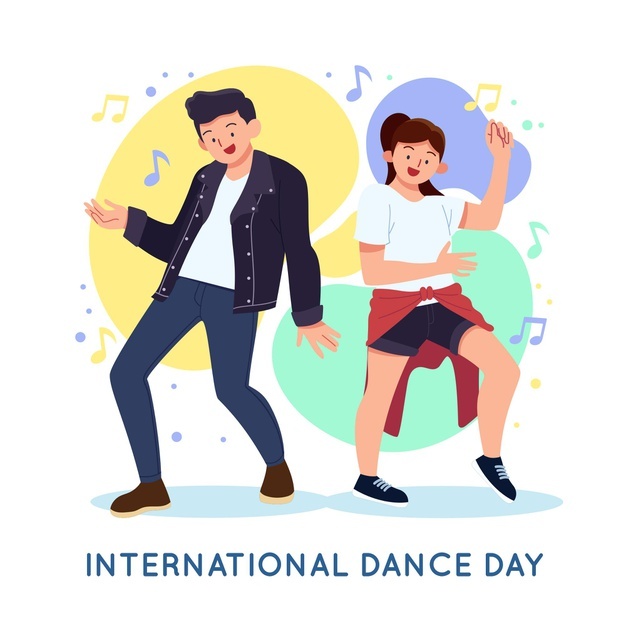
Benefits of dance therapy.

Dance movement therapy according to The Indian Association of Dance Movement Therapy (IADMT) defines “DMT as a psychotherapeutic method that uses movement and creative expression to further socio-emotional, cognitive and somatic integration. This approach is based on the principle that the body and mind are integrated. It helps in self-expression to bring about a change in the total functioning of an individual.”
Dance movement therapy as the name suggests may sound like a therapy that includes dance in it but it is different from simply dancing in a therapeutic manner.
Dance movement therapy as the name suggest doesn’t mean just simply dancing in therapy. Dance movement therapy is not exclusively for dancers, nor is it a dance class. A dance class focuses on style, form whereas Dance Movement therapy, on the other hand, does not focus on technique, form or style. Clients are not assessed on how they execute the steps, or how they look when they are dancing. During dance movement therapy sessions, an individual is encouraged to express what feelings and thoughts they go through during the process of moving.
Dance means different to different people and different cultures. Dance is all of your emotions put together into movements. It’s not always beautiful, and people don’t always understand it, and often hard to come up with one way of looking at it.
Dance movement therapy is not exclusively for dancers, nor is it a dance class. A dance class focuses on style, form whereas Dance Movement therapy, on the other hand, does not focus on technique, form, or style. The client is not assessed on how they execute the steps, or how they look when they are dancing. During DMT, an individual is encouraged to share what is happening within them.
Dance movement therapy has a wide range of benefits-
- It can be practiced in various settings like schools, daycare centres, mental health, rehabilitation, medical, educational settings, and in nursing as well as old age homes and in private practice (clinics).
- DMTs work in a range of settings within the public, private and voluntary sectors including health, education, and social services.
- DMT may be recommended as a primary service or as a complement to other forms of on-going treatment, rehabilitation or education. The therapy can be short term or long term. To engage an individual does not require any dance skills or training just the willingness to move. The focus is upon the therapeutic process. The therapist would be a certified professional in the field of Dance movement therapy.
- Dance Movement therapy can help individuals, with different abilities, capacities and life conditions since it works with the individual’s body at that time of their life.
- Dance movement therapy is beneficial for individuals with developmental, medical, social, physical, and psychological impairments. It has been used to help people managing, however not restricted to these concerns, learning disabilities, neurodevelopmental disorders like Autism, ADHD. Alzheimer’s, dementia, Parkinson’s disease, Cancer, mood and anxiety disorders, eating disorders, movement disorders, sensory processing disorders, trauma, and even violence prevention. Individuals struggling with communication issues, body image concerns, chronic pain, adjustment concerns can also benefit from Dance movement therapy.
- As language is not a barrier when it comes to movement, it can be used globally, with people of all ages, races, and ethnic backgrounds in individual, couples, family, and group therapy formats.
- It can benefit individuals, couples, families, groups, and organizational teams.
- DMT helps in developing Self-awareness, self-perception, confidence, creating a sense of calm, relational abilities, and mindfulness. It has been displayed to diminish pressure, fears, and nerves, just as decrease sensations of disengagement, body strain.
- Movement helps in teaching an individual how to translate the nonverbal movements into insights that can use in their journey to recovery.
Each one of us can move, each one of us has a movement language. All of us can dance! The idea of DMT is getting aware of your body, feeling, accepting, and working on yourself.
Unlike in a dance class, participants in dance movement therapy are not expected to begin dancing the moment the music begins. It's more about the process and not about the outcome!
To know more about Dance Movement therapy in Mumbai contact:
Mpower- The Centre , Hughes road
1/155, 15, Nyaymurti Sitaram
Patkar Marg, Khareghat
Colony, Hughes Road,
Mumbai - 400 007.
+91 22 2385 6228,
+91 97028 00044
Also read-
https://mpowerminds.com/blog/How-effective-is-dance-therapy-with-your-partner-in-strengthening-the-relationship-Is-it-a-part-of-couple-counselling
https://mpowerminds.com/blog/Understanding-Dance-Movement-Therapy

How Social Isolation Impacts Geriatric Mental Health? How to Reverse It?
Depression vs Dementia: How to Tell the Difference in Older Adults

